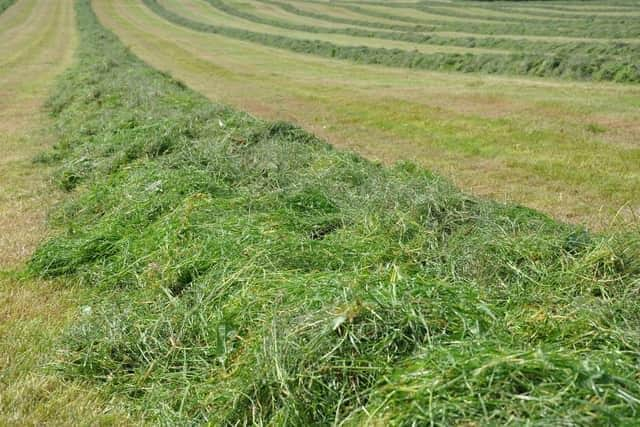NFU Mutual urges farmers in Northern Ireland to start silage making season as safely as possible
and live on Freeview channel 276
As the machinery may not have been used for several months, NFU Mutual is calling for farmers to carry out machinery maintenance, as well as ensuring employees are properly inducted and trained ahead of the silage season.
Martin Malone, NFU Mutual Northern Ireland manager, said: “Getting high quality silage is vital for farmers who are facing high fertiliser and energy costs, but safety must remain at the forefront of minds this silage-making season.
Advertisement
Advertisement
“Working under pressure to get crops in before the weather changes is a perennial issue for farmers, but it is a well-known fact farm incidents happen when people are tired, machinery is pushed too hard or work continues in unfavourable conditions. No cut of silage is worth someone’s life or limb.”


Before silage harvesting:
- Make sure you have identified and assessed the hazards on the farm, in the field and the tasks that will be conducted during silage harvesting and know how to manage the risks
- Put in place a system for keeping in contact with lone workers
- Make sure new staff are properly inducted and trained for the work you give them – in particular the dangers of working with and around farm machinery
Advertisement
Advertisement
- Teach staff about the principles of “Safe Stop”: Make sure the handbrake is fully applied; controls and equipment are left safe; stop the engine; and remove the key, before leaving the vehicle or accessing the machine
- Put in place measures to ensure children are kept away from working areas
- Make sure staff know the safe working loads of trailers and don’t allow trailers to be overfilled
- Ensure vehicles and trailers are road legal with fully maintained and working brakes, lights, indicators and flashing beacons. Also check the age, condition and pressures of tyres
Advertisement
Advertisement
- Consider letting local people know when you will be taking silage trailers on local lanes via neighbourhood social media sites to help people reroute journeys as this will cut delays and incident risks
Working in the fields:
- Regularly check moving parts of mowers, tedders, forage harvesters and balers, including guards and PTO shafts for wear or damage
- Switch off engines and ensure parts have stopped before clearing blockages or carrying out maintenance - remove keys as well to prevent accidental starting (Safe Stop!)
- Make sure drivers are aware of the locations and heights of overhead power lines and check that your machinery will safely pass under wires and restrictions
Advertisement
Advertisement
- Take special care to check for vehicles following behind before turning right into fields or yards, as this is a common cause of accidents
- Regularly clear up any mud deposits from roads – warn drivers with signage where mud may be present
- Be aware of potential walkers in fields with public rights of way and stop the vehicle if people are in close proximity
- Keep a mobile phone on you at all times - not left in a tractor or pick-up cab
Advertisement
Advertisement
- Take regular breaks to eat, drink and rest to stave off tiredness